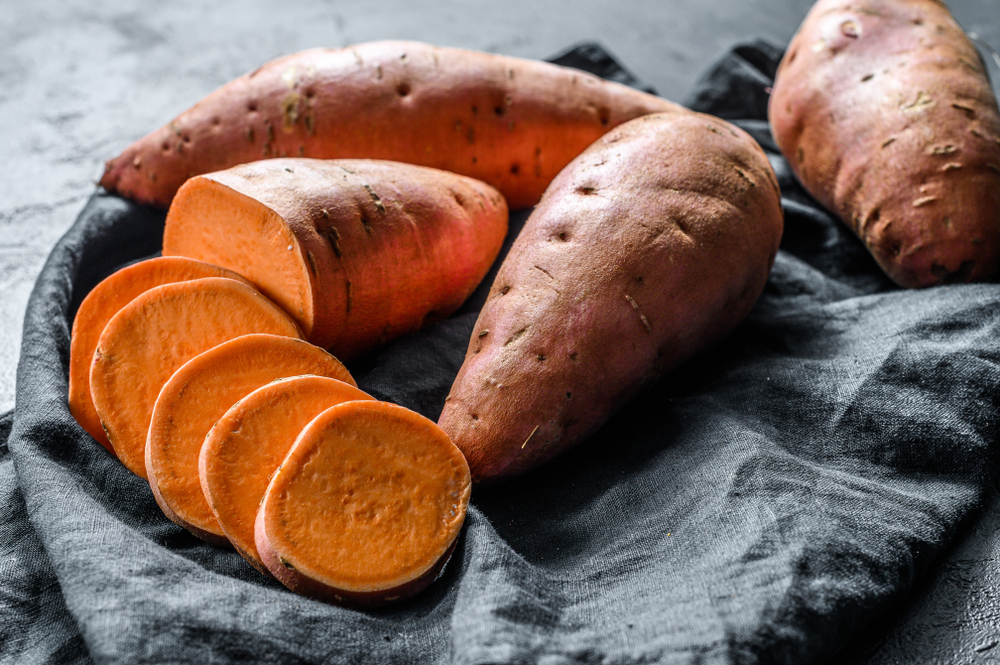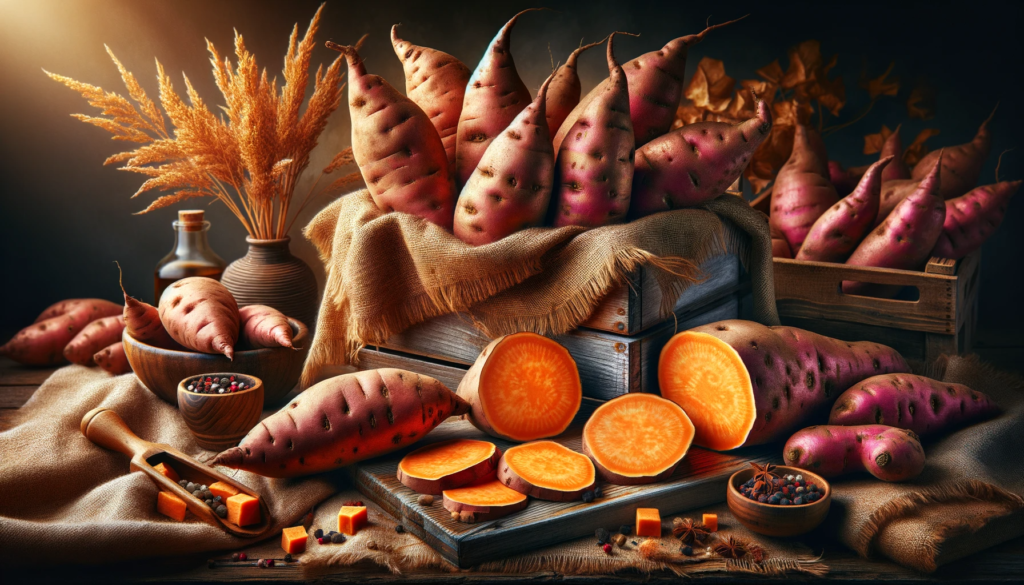Introduction to Kumara (Sweet Potato)
The Cultural and Historical Significance of Kumara in the Pacific
Delve into the rich tapestry of Pacific history, and you’ll find the kumara, or sweet potato, at its very heart. Brought to the region by Polynesian explorers over a millennium ago, kumara has become more than just sustenance—it’s a symbol of life and prosperity. This cherished staple crops up in countless cultural narratives and has a profound presence in traditional ceremonies and social gatherings. The proliferation of kumara across Oceania tells a broader story of human settlement, sea voyages, and cross-cultural exchanges, standing as a testament to the ingenuity and adaptability of ancient Pacific Islanders.
The Nutritional Profile of Kumara
Health Benefits and Key Nutrients in Sweet Potatoes
A nutritional dynamo, kumara comes loaded with an array of essential vitamins and minerals. High in beta-carotene, the precursor to vitamin A, and rich in dietary fiber, kumara supports eye health and digestive well-being. It also offers vital nutrients like vitamin C, manganese, copper, and several B vitamins, contributing to overall health by boosting the immune system, maintaining healthy skin, and promoting metabolic function. With their inherent anti-inflammatory and antioxidant properties, sweet potatoes are a cornerstone for a nutritious diet, helping ward off chronic diseases and keeping your body in peak condition.

Culinary Uses of Kumara in Pacific Cuisine
Diverse Cooking Methods and Popular Kumara Dishes
Kumara’s versatility shines in Pacific cuisine, where it’s embraced in myriad forms—from simple, rustic preparations to intricate culinary creations. It can be boiled, baked, roasted, mashed, or even included in sweet treats, invoking its natural sugars to tantalize the palate. Popular dishes like ‘umu-cooked kumara’ and ‘kumara pie’ showcase the root vegetable in traditional and innovative ways, often featuring local herbs and spices that elevate its sweet, earthy flavors. Such recipes are shared between generations, reflecting the deep connection of Pacific peoples to their land and ocean.
Traditional and Contemporary Kumara Recipes
From time-honored recipes passed down through oral tradition to contemporary twists that cater to a global palate, kumara holds its own in Pacific kitchens. Traditional recipes like kumara lo’i, a dessert made with coconut milk, stand alongside modern renditions such as sweet potato hash with a poached egg. The adaptability of kumara allows it to be integrated into vegan, gluten-free, and paleo diets, proving this ancient food staple’s enduring relevance in contemporary culinary trends. Its naturally creamy texture and inherent sweetness render it a favored ingredient for both main courses and desserts, bridging the gap between old and new with delicious ease.
Kumara in Traditional Pacific and Oceanian Diets
The Role of Kumara in Indigenous Cooking and Rituals
In the annals of Pacific and Oceanian diets, kumara is more than just food; it’s part of the cultural fabric. Integral to religious ceremonies and festive feasts alike, kumara has always played a pivotal role in indigenous cooking. Cooked in earth ovens or wrapped in leaves and steamed, it has been consumed during sacred rituals and as an offering to deities. This deep reverence echoes the significance placed on kumara as a lifeline—nourishing the Pacific Islanders’ body and spirit while reinforcing their connection to each other and the natural world.
Varieties of Kumara Found in the Pacific Region
The Pacific region revels in a kaleidoscope of kumara varieties, each distinguished by its unique color, shape, and flavor profile. The orange-fleshed Beauregard and golden-hued Toka Toka are just two examples from the sweet potato family that thrive in the Pacific’s fertile soils. Local names and cultivation methods vary, reflecting each Pacific island group’s rich biodiversity and tailored agricultural practices. Such diversity ensures that kumara remains a resilient and adaptable crop, capable of meeting a growing population’s gastronomic and nutritional needs.

Preparing and Cooking with Kumara
Tips for Selecting and Storing Kumara
When it comes to enjoying the best of what kumara has to offer, selecting high-quality roots is key. Look for firm sweet potatoes with smooth skin, free of bruises and blemishes. Storing them in a cool, dry place away from direct sunlight preserves their freshness, ensuring they retain their nutritional benefits for longer. Avoid refrigeration as it can alter their texture and taste. Proper storage minimizes waste and allows for a stockpile of this nutritious food, making healthy eating accessible and convenient.
Best Practices for Cooking to Preserve Nutrients
The true essence of kumara’s nutritional power can be harnessed with mindful cooking practices aimed at preserving its key nutrients. Methods such as steaming or baking, rather than boiling, minimize nutrient loss and enhance the natural flavors. Incorporating the skin, which is packed with fiber and antioxidants, in recipes increases the health benefits. Cooking kumara at moderate temperatures with minimal processing ensures that its vitamins and minerals remain intact, optimizing the healthful impact of this versatile ingredient in every meal.
The Role of Kumara in Modern Healthy Eating
Incorporating Kumara into a Balanced Diet
Embracing the global shift toward balanced eating, kumara fits perfectly within a diverse and nutritious diet. Whether used as a healthier alternative to traditional starches or as a main console full of fiber and vitamins, sweet potatoes contribute to a sense of fullness and satisfaction. They pair well with greens, lean proteins, and whole grains, helping to craft well-rounded meals that fuel the body and tantalize the senses. The ease with which kumara can be woven into daily eating habits makes it an invaluable asset for those seeking a wholesome lifestyle.
Kumara as a Superfood in Global Cuisine
With the global food culture increasingly recognizing the importance of superfoods, kumara has claimed its rightful place at the table. Celebrated for its nutritional prowess, this humble root vegetable dovetails with countless culinary traditions worldwide. Its hearty texture complements a spectrum of spices and herbs, contributing to multicultural dishes that resonate with a wide audience. Whether roasted and tossed into a Mediterranean salad or pureed into a velvety South American soup, kumara’s global culinary applications are as vast as its health benefits, securing its status as a contemporary superfood with deep ancestral roots.
Sustainable Cultivation of Kumara
The Importance of Kumara in Sustainable Agriculture
As the world grapples with the challenges of sustainable food production, kumara emerges as an exemplar of agricultural resilience. Thriving in conditions with relatively low water and fertilizer requirements, sweet potato cultivation has a minimal ecological footprint, making it an ecologically sound choice for food security. Its ability to improve soil health and yield high caloric content per acre bolsters the argument for integrating kumara into crop rotation and polyculture systems. As we seek sustainable solutions for feeding the planet, kumara’s hardiness and nutritional abundance exemplify the virtues desired in staple crops of the future.
FAQs About Cooking with Kumara
Can You Eat Kumara Skin?
Yes, kumara skin is safe to eat and packed with nutrients. The skin of sweet potatoes contains a significant amount of fiber, potassium, and antioxidants. When cooking kumara, consider leaving the skin on to enjoy the full range of health benefits. To best enjoy the skin’s natural texture and flavor, scrub the kumara thoroughly under water before cooking to remove any dirt, and then cook it by baking, roasting, or grilling to achieve a delightful crispy texture.
How to Prevent Kumara From Becoming Mushy?
Avoiding a mushy texture in your sweet potatoes involves simple techniques. First, select the right variety of kumara for the cooking method you plan to use; some varieties hold their shape better when cooked, making them ideal for salads or dishes with a firmer texture. Additionally, ensure not to overcook them. Monitor the kumara closely as it cooks, and remove it from heat as soon as it’s fork-tender. Lastly, let steamed or boiled sweet potatoes drain well and steam out for a minute or two before serving or adding to recipes.
What is the best way to enhance Kumara’s natural sweetness?
Roasting is one of the best methods to enhance the natural sweetness of kumara. Slow-roasting at a high temperature allows the starches in sweet potatoes to break down into sugars, creating a caramelized, charming exterior and a soft interior. To further accentuate this sweetness, a light sprinkle of cinnamon or nutmeg before roasting can complement the kumara’s flavor profile. Alternatively, a drizzle of honey or maple syrup towards the end of the cooking time can provide an additional touch of sweetness and glaze.
Discover the exotic and flavorful indigenous ingredients in Oceania. Your taste buds will thank you!
